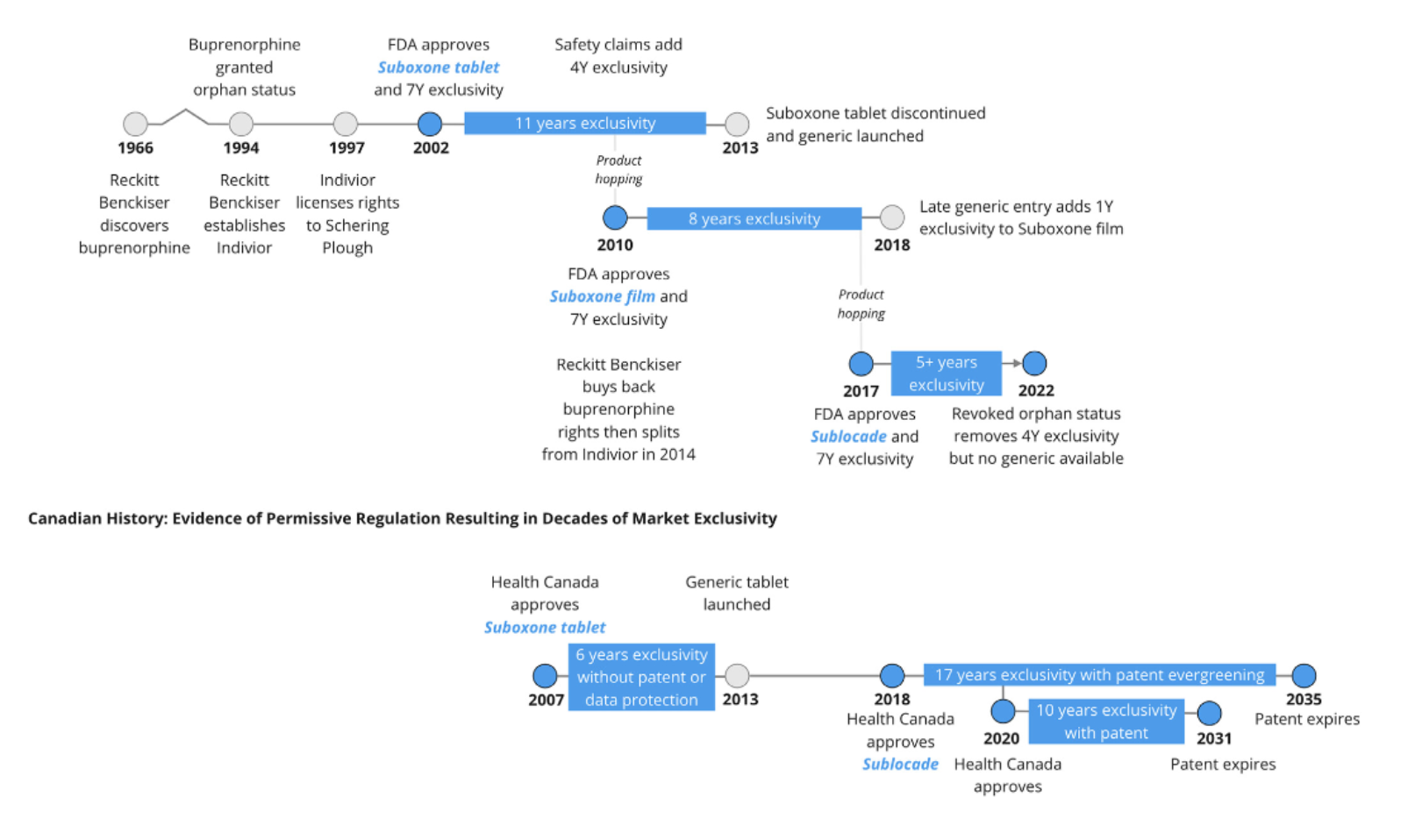Permissive regulation: A critical review of the regulatory history of buprenorphine formulations in Canada

Permissive regulation: A critical review of the regulatory history of buprenorphine formulations in Canada

Citation
Sud A, McGee M, Mintzes B, Herder M. Permissive regulation: A critical review of the regulatory history of buprenorphine formulations in Canada. Int J Drug Policy. 2022 Jul;105:103749. doi: 10.1016/j.drugpo.2022.103749. Epub 2022 May 26.
Abstract
Suboxone (buprenorphine-naloxone) is an opioid product approved in the US and Canada for the treatment of opioid use disorder. The drug is considered an important response to the opioid overdose epidemic with consistent calls for wider prescribing and deregulation. The history of Suboxone regulation in Canada has not been critically examined. Part of the rationale for doing so stems from the US regulatory experience, with documented irregularities, or what some have called abuses, that support profit-making by Suboxone’s manufacturers. This regulatory analysis allows us to determine how opportunities to address health crises through drug innovation are managed at a federal level. We used public drug and patent registries to critically examine Suboxone’s Canadian history. First, we investigated Suboxone’s entry into the Canadian market to understand how it achieved market exclusivity. Second, we examined Health Canada’s risk mitigation process to address extramedical use and diversion to understand the intersection of regulation and brand promotion. Insights from these two analyses were then extended to the recent approval of two related buprenorphine-containing products and their specific pathways to Canadian market exclusivity. We identified inconsistencies in Suboxone’s regulatory history that suggest Health Canada’s functions of health protection and promotion were compromised in favour of an “innovations” agenda that supports profit-making. Despite six years of market exclusivity in Canada, there was no evidence suggesting Suboxone achieved formal exclusivity (i.e., through patent or data protection). Health Canada’s process to address safety concerns of Suboxone were compromised by reliance on the manufacturer to carry out post-market education, allowing the manufacturer to create and market a branded “education” program for its product. Similar inconsistencies have afforded market exclusivity for two related products despite marginal innovation. These analyses reveal a case of permissive regulation, where principles of health protection are compromised by economic imperatives. Such a regulatory approach has the potential to adversely impact public health due to unnecessarily high costs for medicines deemed essential to stem a major health crisis. Alternative pharmaceutical policies are urgently needed to safely and efficiently expand treatment access for opioid use disorder.
Funding
Link